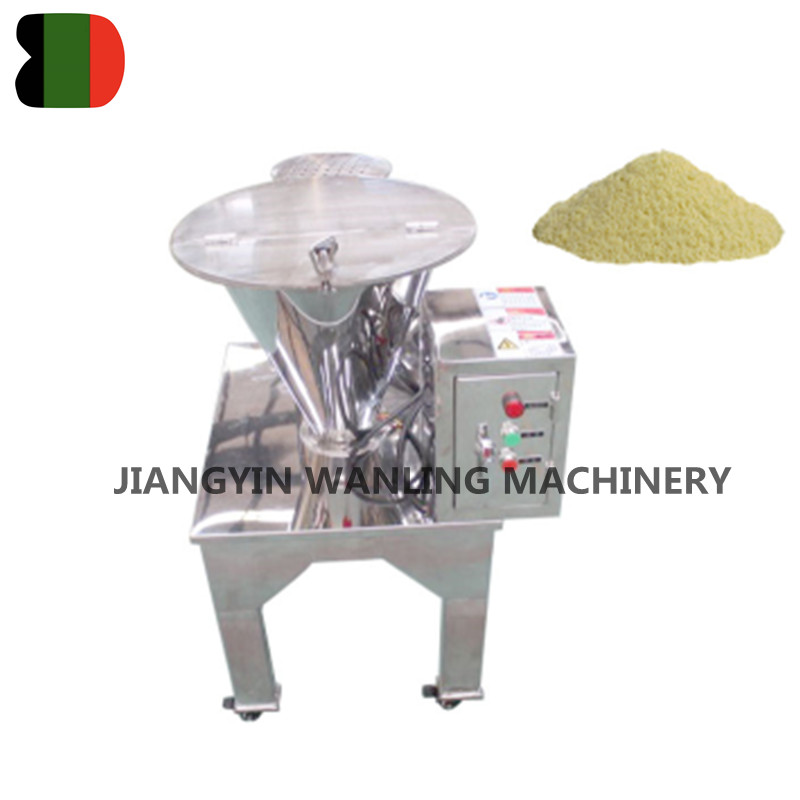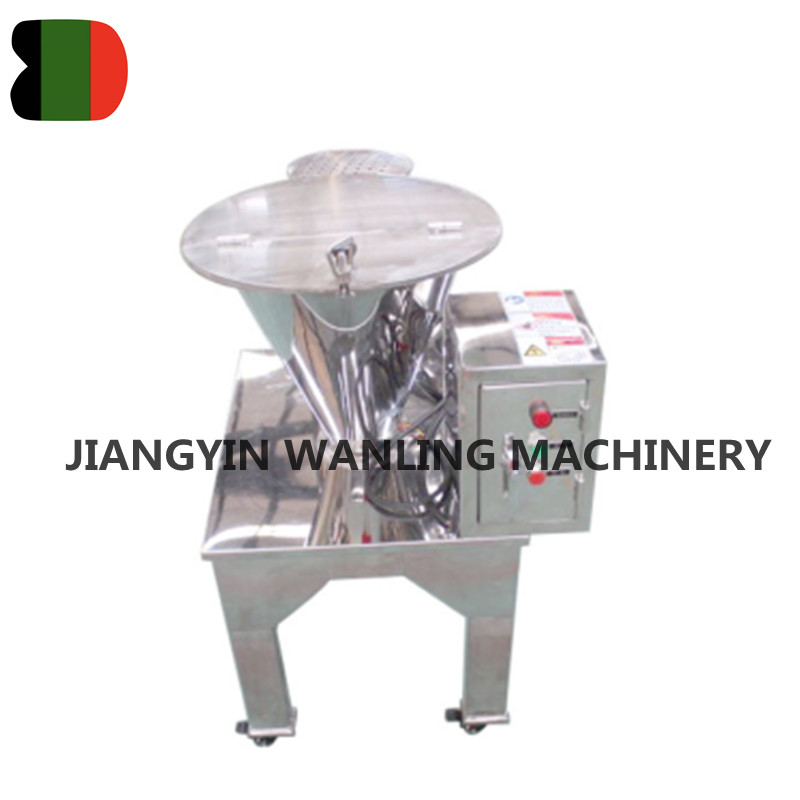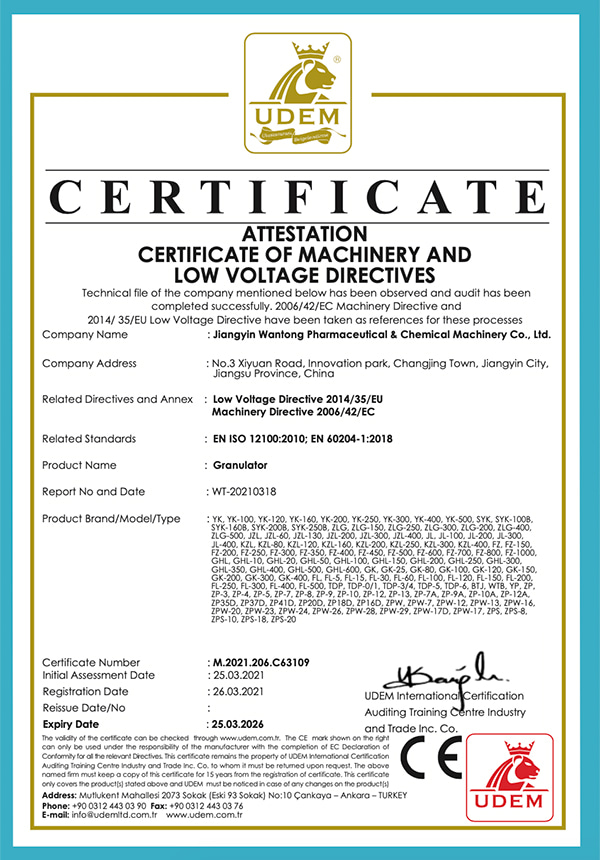Grinding Granulating Machine Manufacturer
-

FZ Medicine Grinding Granulating Machine
This FZ medicine grinding granulating machine applicable to the pharmaceutical, chemical, agricultural, chemical and food industries etc. It... -

FZ Food Biscuits Grinding Sorting Machine
Grinding sorting machine application: Raw material crushing, wet material granulation, dry material granulation, and unqualified tablets tha... -

FZ pharmaceutical pills crushing sorting machine
The pharmaceutical pills crushing sorting machine is used very widely with the good effect, the machine can replace swing granule machine, i...
The crushing and whole particle machine has fast particle size and good effect. It is designed with a special hole filter screen, carefully screened, and its friction filter rod can crush and filter solid particles. This machine can replace the swinging particle machine. Crushing and pelletizing machine refers to machinery and equipment suitable for pharmaceutical, chemical, food industries, etc. Make the overall appearance of the machine clean and beautiful. To significantly improve the quality and economic efficiency of particles.

About Us
Honor
-
 Honor
Honor -
 CE
CE
News
-
Industry News 2025-10-22
1. What a Horizontal Ribbon Mixer Is and Where It’s Used A horizontal ribbon mixer is an industrial ...
View More -
Industry News 2025-10-16
A tray dryer is a batch drying equipment widely used in the pharmaceutical, food, and chemical indus...
View More -
How does a double cone blender compare to ribbon blenders or V-blenders for industrial applications?Industry News 2025-10-09
A double cone blender has distinct advantages and limitations when compared to ribbon blenders and V...
View More -
Industry News 2025-10-01
Electric-Powered Tray Dryers Advantages: Precise and Stable Temperature ControlElectric-powered tr...
View More
Industry Knowledge Expansion
How does a grinding granulating machine handle heat-sensitive materials?
A grinding granulating machine can be designed and operated in a way that accommodates heat-sensitive materials by implementing several strategies to minimize heat generation and ensure gentle processing. Here's how this can be achieved:
Cooling Systems: Incorporating cooling systems within the machine can help to maintain a lower temperature during the grinding and granulating process, which is crucial for heat-sensitive materials.
Controlled Speed: Operating the machine at lower speeds can reduce the amount of friction and heat generated during processing. The speed of the grinding elements can be adjusted to suit the sensitivity of the material.
Material Flow Rate: Adjusting the flow rate of the material through the machine can help control the amount of heat generated. A slower flow rate can prevent overheating by allowing more time for heat dissipation.
Material Handling: Gentle handling and feeding mechanisms can be used to minimize the mechanical stress on heat-sensitive materials, reducing the risk of heat generation through friction.
Material Segregation: Ensuring that the heat-sensitive material is not in contact with hotter parts of the machine for extended periods can help prevent overheating.
Use of Cryogenics: In some cases, cryogenic grinding can be employed, where the material is cooled with liquid nitrogen or other cryogenic agents before being processed, reducing the risk of heat damage.
Heat Exchangers: Utilizing heat exchangers can help to dissipate heat away from the grinding and granulating zones, maintaining a cooler environment for the material.
Insulation: Insulating the grinding chamber can help to contain heat and prevent it from affecting the material being processed.
Vacuum Processing: Operating the machine under vacuum conditions can reduce oxidation and associated exothermic reactions, which can generate heat.
Short Processing Times: Minimizing the residence time of the material in the machine can help to prevent overheating.
Material Pre-treatment: Pre-treating the material to reduce its sensitivity to heat can be an option, although this depends on the specific material and its properties.
Monitoring and Control Systems: Implementing real-time monitoring and control systems can help to detect and adjust for any temperature increases during the process.
By incorporating these features and operational strategies, a grinding granulating machine can effectively handle heat-sensitive materials while minimizing the risk of thermal degradation.



 Español
Español
